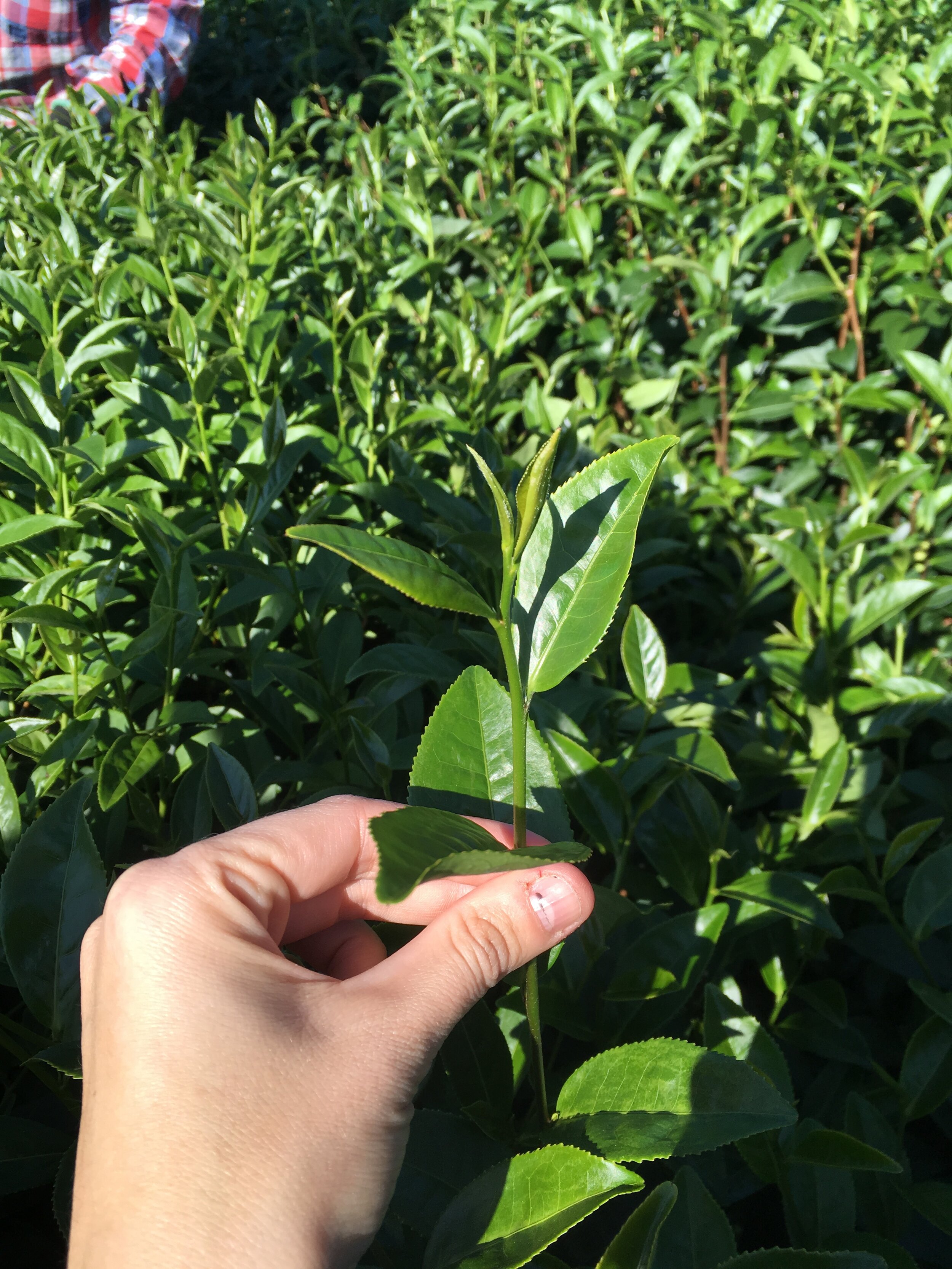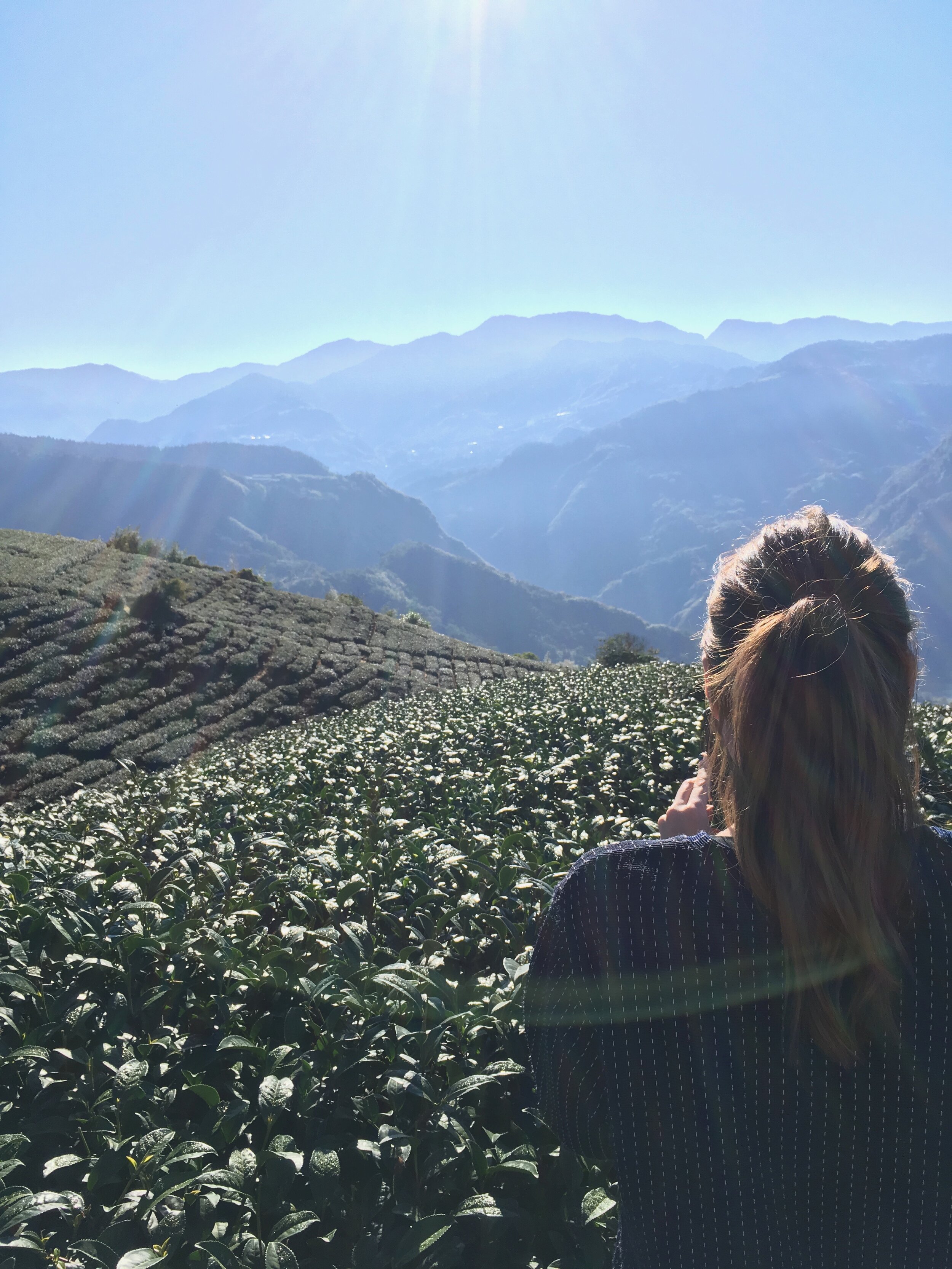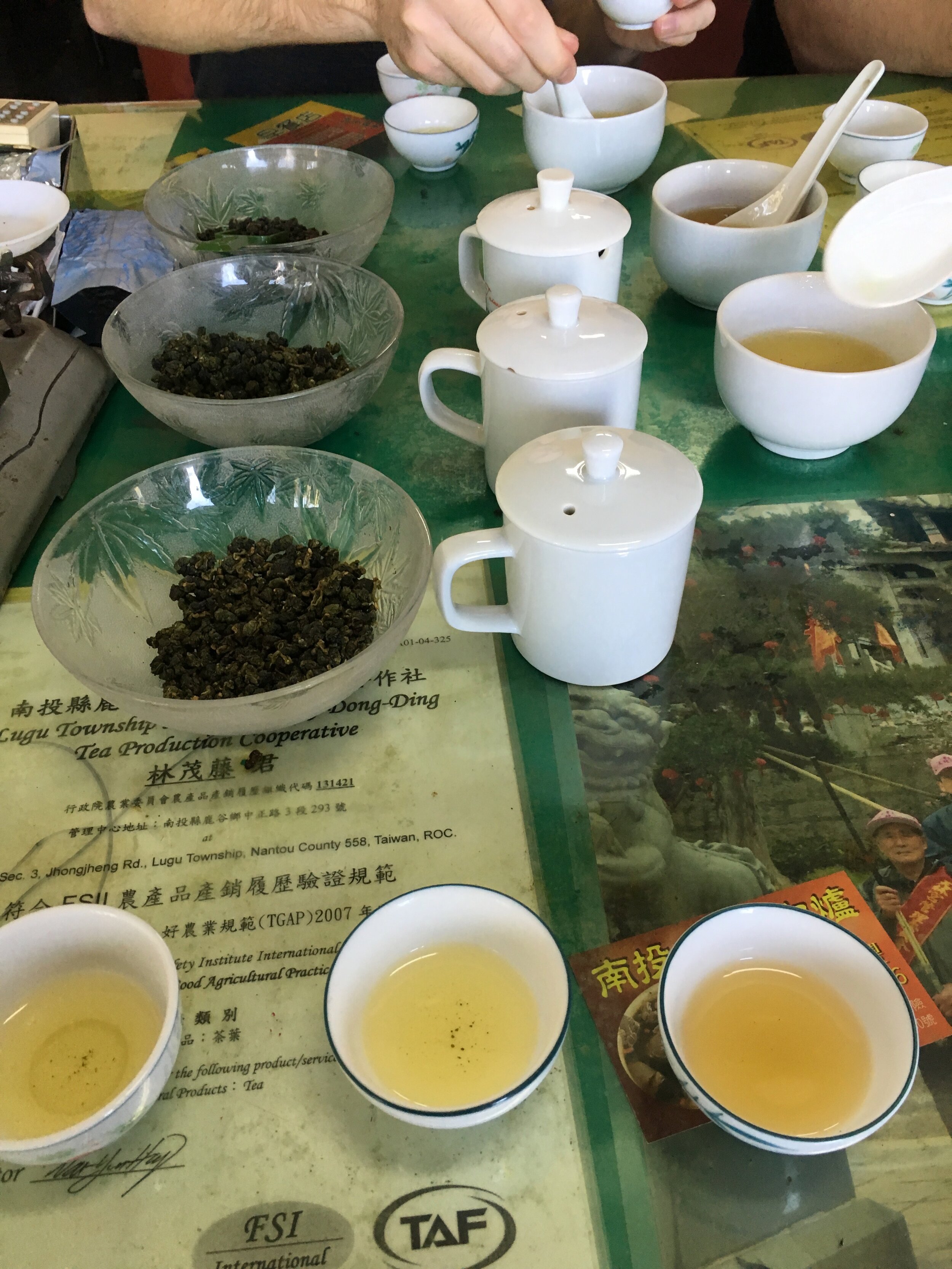News from Taiwan + NJ
Make sure to read up on the latest harvest!
Fall Harvest 2023 Reveal
Hey everyone,
Welcome back! I hope y'all had a great summer. Here at BANGtea I've been busy cooking up a number of surprises... the first of which I'm excited to share with you today!
Get your hot water ready because three (3) new oolongs are available and gosh, they are tasty.
-Sam
⛅ weather report
Nothing notable to report, no large typhoons impacted harvest - it was a pretty regular fall season. Instead of talking about the weather for a bit, I thought we could take a dive into some lightweight tea science!
A brief overview of Polyphenols and Amino Acids… and why it relates to Fall harvest
Each season produces oolongs with wildly different characteristics. Drink enough green oolong from season to season and you’ll start noticing the differences! While there are many variables that influence the final flavor of a tea, there are two essential compounds in the tea-leaf chemistry that we pay attention to when making oolongs; polyphenols and amino acids. Weather dependent, these two compounds are present in varying quantities during each season and affect the taste and character of the finished tea.
Polyphenols are naturally occurring compounds found in leaves from the camellia sinensis plant that offer numerous health benefits like acting as an anti-inflammatory and promoting cardiovascular health. They also play a pivotal role in shaping the tea leaf’s transformation process.
In the tea world, we pay attention to these levels as they are indicative of a tea leaf’s "willingness" or suitability to be transformed into tea. It’s worth noting that camellia sinensis cultivars with high polyphenol content are often ideal candidates for transforming raw tea leaves into a finished oolong (e.g. qingxin, jinxuan, and many others that are predominantly grown in Taiwan). But why? These compounds contribute to the tea's complex flavor profile, floral notes, and the ability to withstand the rigorous oolong processing methods, which include withering, rolling, oxidizing, and roasting. Typically the summer and fall harvests possess the highest polyphenol levels, making them some of the most nutrient-rich oolongs you can consume!
Amino acids are responsible for the bitterness of your brew. Warm weather during summer & fall increases the amino acid content in raw tea leaves. As a result, the oolongs produced during these seasons have a more bold and bitter taste. This is precisely why many tea drinkers favor spring and winter harvests that have lower amino acid levels and yield more delicate, smoother oolongs.
So which tea should I try? Well, it’s up to you! Fall teas are not recognized as the most impressive teas of the year, however they are incredibly nutritious… and I think delicious . For years I’ve been advocating for more folks to drink Fall oolongs. They are a sleeper hit if you like a strong, bold brew. I usually start my morning with our Fall green oolong to wake up & then shift into the Winter harvest green oolong my afternoon pick-me-up.
🍵 fall tea collection
This year we produced two teas during the Fall harvest that occurred at the tail end of August/beginning of September. Both are intense (read the blurb on amino acids & polyphenols to learn why), both are tasty, and I think you’ll enjoy them in different ways!
🥬 unroasted green oolong
This year’s Fall green oolong is delicious. With a thick broth, it’s easy to brew lightly or more bold. The overall profile is savory – a bit broth-like, with just the slightest dryness and tingly feeling on the tongue allowing you to continue enjoying the flavor long after you’ve finished your cup! Not too floral like a Spring oolong and not too smooth like a Winter oolong, this Fall unroasted green oolong is just right.
Tasting notes: Kale, edamame, mountain herbs || Shop Now
☕ red oolong
This oolong is bold and has some serious zip! Based on your brewing method, our red oolong is always a chameleon – let it steep for a long time and you’ll have an intense brew, excellent for iced tea or a cold brew. If you prefer shorter steeps, you’ll be able to experience more depth and nuance of flavor, bringing out its nutty and fruitiness. If you’re curious about red oolongs, we’ve modeled ours off the Dong Ding style that is grown in the nearby famous growing region. Consider this a twist on a classic, grown at a higher elevation and equally delicious. If you’re a coffee drinker, you may love our red oolongs long, lingering aftertaste and mild astringency.
Tasting notes: Pecan, coffee grounds, red plum || Shop Now
🍠 Spring pt.2 GABA oolong
After a long wait, GABA is back in stock! Thanks so much to everyone for being so patient. This GABA was produced back during the 2023 spring harvest, however in order to sell tea in Taiwan under the GABA name, the tea must first undergo testing to certify it meets the minimum threshold of GABA content (150mg/100g leaves). Good news yet again, our GABA content for the 2023 harvest has achieved a concentration of 193mg/100g leaves.
The leaves have undergone an extended 3-day anaerobic fermentation process and are finished with a 4-hour roast. The broth is thick, sweet, and reminds us of a sweet potato or baked apple. The mouthfeel is juicy; the tea overall reminds us of a baked fruit pie without much crust. If you’ve been a fan of our GABA in the past, you’ll want to try this year’s batch. For us, the 2023 spring harvest batch has exemplified our ideal GABA in taste & body.
Tasting notes: Sweet potato, brown sugar, baked apple || Shop Now
INFO: GABA Oolong
Welcome to the world of GABA oolong. Below I’ll share a brief overview of GABA, GABA oolong, and associated benefits. I’ll also link you to some research if you want to check out the science behind it all.
First and foremost, what is GABA?
Short for gamma-aminobutyric acid, GABA is an amino acid that naturally occurs in the human brain, plants and other animals. In humans, GABA functions as an inhibitory neurotransmitter that blocks messages between the brain (namely the amygdala) and other parts of the central nervous system. This typically results in decreased feelings of anxiety, stress, and fear. In other words, GABA has the ability to calm our primal fight-or-flight response and improve our ability to process information (1) in the here and now.
As luck would have it, GABA is one of the many beneficial nutrients found in the tea plant. That puts it in the company of better-known substances like L-theanine (an amino acid that helps promote relaxation) and caffeine (a defense mechanism for the tea plant that serves as a natural stimulant). Most of the time, GABA levels in the tea plant are not concentrated enough to have a noticeable effect on our brains. Fortunately, a straightforward technique allows us to augment these levels.
How do we increase GABA content in tea leaves?
Generally speaking, when transforming raw, freshly-picked tea leaves into an oolong tea, we allow oxygen to act as the primary catalyst of fermentation. Over an extended period of time, amino acids and other compounds present in tea leaves interact with oxygen, altering the overall composition of the raw tea leaf.
In the late 1980s in Japan, tea researchers studying theanine accidentally discovered that tea leaves stored in anaerobic conditions wound up with higher levels of GABA. These days this uniquely prepared tea continues to grow in popularity, but production is still limited predominantly to Japan and Taiwan.
Today a tea is allowed to be categorized as GABA only if the GABA content is higher than 150mg/100g leaves. Any lower and the tea likely will not possess the same health benefits and cannot be packaged with a GABA label. As a heads up, some teas are marketed as GABA without meeting this standard.
Why do people like GABA oolongs?
This is an easy one! The flavor. GABA oolongs have a tremendously delicious flavor profile. Most often we hear GABA teas have a unique sweet/savory flavor reminiscent of sweet potatoes, pumpkins, or persimmons…all of which are exciting to discover in a tea.
Drinking tea with high levels of GABA has a number of purported health benefits (2) such as…
Increased focus
Lowered blood pressure
Relief for anxiety, depression, and insomnia
Hangover prevention and relief
If you’re interested in reading more about GABA, check out the links below.
Sources
2 United States Pharmacopeia (USP) Safety Review of Gamma-Aminobutyric Acid (GABA)
Interested in Mrs. Qiu’s GABA oolong?
Our GABA is the result of a multi-year search to find an impressive representation of the style. Only in its fourth year of production, Mrs. Qiu’s GABA tea has already received recognition in competition. This GABA uses the qingxin cultivar, is grown on Alishan, and is produced only once per year during Spring harvest. The leaves have undergone an extended 3-day anaerobic fermentation process and are finished with a 4-hour roast. The broth is rich and possesses a persimmon-like flavor. The dry leaf smells of delicious baked goods, and the wet leaf presents an ethereal scent of rose.






